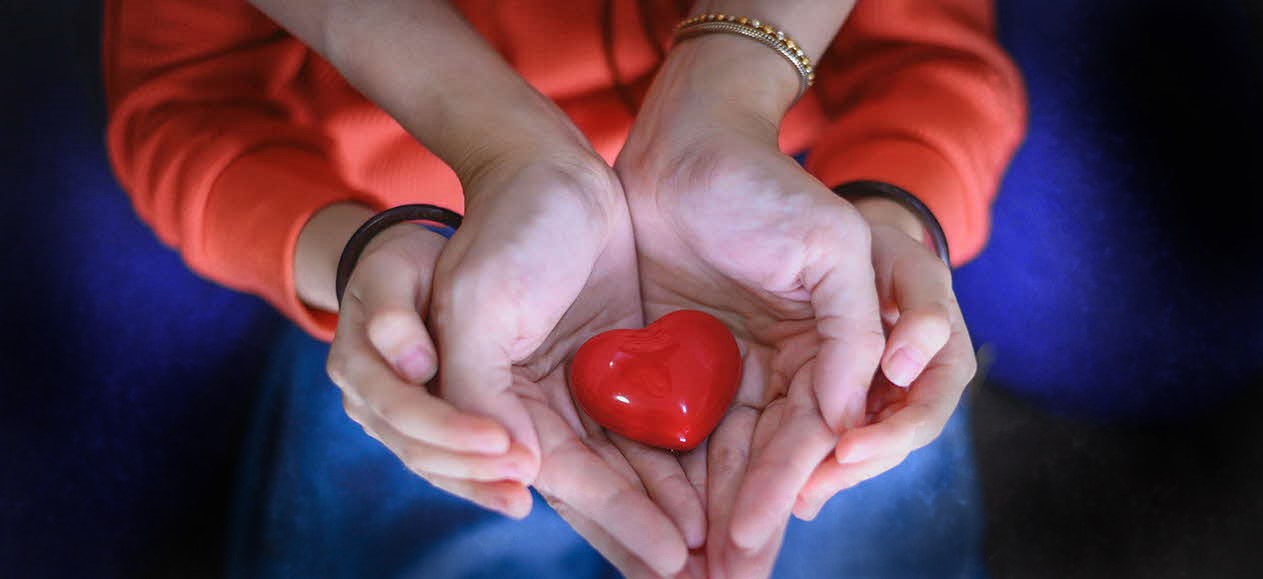Matters of the heart
How to be better prepared for heart-related issues
In Singapore, more than 3,000 people get cardiac arrest each year and almost 12,000 had a heart attack in 2020* alone. Dr Ho Kay Woon of National Heart Centre Singapore explains the difference between the two heart conditions and their implications.
1. What are the differences between a cardiac arrest vs heart attack?
Cardiac arrest is when the heart stops pumping and causes the patient to collapse as there is no circulation in the body.
In contrast, a heart attack is when there is sudden and complete blockage of a major coronary artery, which is the main blood supplier to the heart muscle. This usually occurs when a plaque rupture within the wall of the coronary artery leads to clot-formation and subsequently complete blockage. The heart muscle cells then start to die and it is a race against time to re-establish blood flow to the heart muscle.
Heart attack is a common trigger of cardiac arrest, which can also be caused by several other factors. In most cases, the heart is still pumping in a heart attack but not in a cardiac arrest.
2. What are the treatments for cardiac arrest and heart attack?
The immediate treatment for cardiac arrest is to re-establish blood circulation to maintain the survival of vital organs in the body. This is ideally achieved by cardiopulmonary resuscitation (CPR), which comprises chest compression and ventilation using proper equipment. In the absence of equipment, chest compression can be performed without ventilation for personal hygiene and safety reasons. Delivery of electrical shocks via a cardiac defibrillator may be appropriate if the cardiac arrest was triggered by abnormal, irregular heart rhythm.
Following a heart attack, the aim is to re-establish blood flow to the affected heart muscles by unblocking the obstructed coronary blood vessel as quickly as possible. This is predominantly achieved by a minimally-invasive procedure called coronary angiogram with coronary angioplasty (commonly known as ballooning) and stenting. If this is not immediately available or significant delays are anticipated, an alternative treatment is the use of thrombolytics (clot-breaking drugs) to dissolve the blood clots and re-establish blood flow to the heart muscles.
3. What is the length of treatment?
A diagnostic angiogram usually takes 15-20 minutes. Angioplasty and stenting takes about 1 hour depending on the number of narrowings in the artery and complexity.
4. What to do for post-surgery lifestyle management?
A heart attack is a life-changing event but patients can slowly resume their normal lives after an episode by doing the following:
- Medication: There will be new medications added to the patient’s existing regime after an admission for a heart attack. It is important to continue these medications daily at the prescribed doses unless there are major side effects.
- Enroll in a cardiac rehabilitation programme: Cardiac rehabilitation is a well-established treatment after a heart attack and studies have shown that rehabilitation not only reduces the chances of cardiac-related death by over 50% and readmissions by 25%, it also improves patients' well-being.
- Control of coronary risk factors. Several risk factors have been established to increase the risk of cardiovascular conditions such as heart attack and stroke. These should be controlled to reduce the risk of subsequent heart attack.
- High blood pressure/diabetes mellitus/high blood cholesterol: Daily use of prescribed medication to keep these conditions under control, a healthy lifestyle that includes a heart-healthy diet (balanced with high-fibre content, including fruits and vegetables, and reduced total calories, salt and cholesterol).
- Smoking: This is a major risk factor. Smoking needs to be stopped immediately and completely after a heart attack.
- Maintain an active lifestyle: Exercise at least once or twice per week for a start, and gradually increase the frequency and intensity of exercise.
- Watch for signs of another heart attack and keep to your regular medical appointments.
5. What is the likelihood of recurrence?
Studies show that up to 2 in 10 patients^ may experience a second heart attack each year. This can be significantly reduced by taking the aforementioned measures.
6. What to look out for?
Patients should watch for signs of another heart attack which may come as a sudden and severe pain in the central chest that is gripping, coupled with cold sweat/nausea and lasts longer than 20 minutes. Seek immediate medical help.
7. What lifestyle measures can lower the chances of a heart attack or cardiac arrest?
Control of coronary risk factors is paramount for prevention of heart diseases as well as for post-surgery care. As shared above, having a heart-healthy diet can help control blood pressure, diabetes and cholesterol. Maintaining an active lifestyle and not smoking can also reduce the risk of cardiovascular diseases.
The article is contributed by Dr Ho Kay Woon, Senior Consultant, Department of Cardiology from National Heart Centre Singapore.
Other than taking steps to reduce the risks of cardiac arrest or heart attack, you should also consider making financial preparations so that you are not caught off guard if faced with these health conditions.
The Singapore government’s basic health insurance scheme, MediShield Life, may protect you against large healthcare bills but it has its limits.
You can better protect yourself financially with GREAT SupremeHealth P Plus and GREAT TotalCare P Series and enjoy up to 95%† coverage of your total hospitalisation bill for life.
Contact your Great Eastern Financial Representative to find out more or request for a call back today.
Footnote:
* https://www.myheart.org.sg
^ Differences in later cardiovascular mortality following acute myocardial infarction among three major Asian ethnicities. Carvalho et al. JACC March 12 ,2013, vol 61 issue 10
† Applicable when the GREAT SupremeHealth plan is attached with either:
a) GREAT TotalCare A plan or GREAT TotalCare B plan;
b) GREAT TotalCare P Signature and for bills incurred at Panel Providers and/or at Restructured Hospitals; or
c) GREAT TotalCare P Optimum and for bills incurred at Restructured Hospitals.
Disclaimer:
This advertisement has not been reviewed by the Monetary Authority of Singapore.
GREAT TotalCare is not a MediSave-approved Integrated Shield plan and premiums are not payable using MediSave. GREAT TotalCare is designed to complement the benefits offered under GREAT SupremeHealth.
The information presented is for general information only and does not have regard to the specific investment objectives, financial situation or particular needs of any particular person.
These policies are protected under the Policy Owners’ Protection Scheme which is administered by the Singapore Deposit Insurance Corporation (SDIC). Coverage for your policy is automatic and no further action is required from you. For more information on the types of benefits that are covered under the scheme as well as the limits of coverage, where applicable, please contact us or visit the Life Insurance Association (LIA) or SDIC websites (www.lia.org.sg or www.sdic.org.sg).
Information correct as at 23 June 2023.
Let us match you with a qualified financial representative
Our financial representative will answer any questions you may have about our products and planning.





